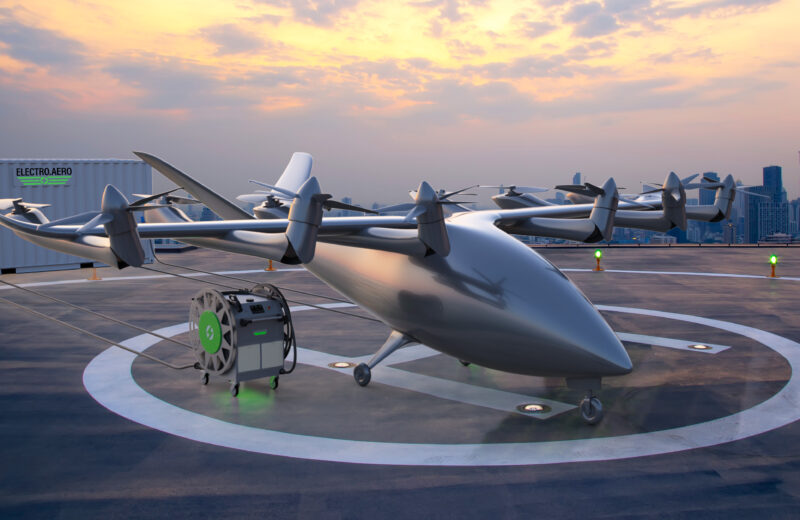Electro.Aero calls for global charging standard

Australian electric aviation charger manufacturer, Electro.Aero is calling on the industry to agree to a global standard for charging couplers.
For the past four years, since Electro.Aero’s founder Joshua Portlock established the AE7D Committee, the firm and committee have been campaigning to standardise the charging coupler for light aircraft to AS6968. Currently, there are around six charging couplers worldwide: AS6968, AIR7357, CCS1, CCS2, China’s ChaoJi and Tesla’s North American 1kV.
Portlock is keen to avoid the chaos of the EV industry in which there are about two or three couplers competing in each country. It is already challenging for large automotive manufacturers to cater for all six couplers globally and would be considerably more difficult for an electric aircraft OEM with a small team, Portlock told Revolution.Aero.
“We have been running this AS6968 standard for light conductive aircraft charging,” he said. “Despite the megawatt boom we have seen over the past year or so, we still believe there is still a huge amount of aviation that could benefit from a light duty coupler. We want to be the enabling technology at airports. An electric aircraft without a charger is really just a simulator.”
The questions the Electro team gets asked most are why are you only focusing on charging and why doesn’t an EV manufacturer do this instead? Richie Watson, Charger Product manager, Electro.Aero told Revolution.Aero: “It is not the same mentality when you’re designing for an aircraft. The wings are a huge barrier, just rolling up to a charger is much more difficult. As power levels increase, cables get heavy and hard to handle. Liquid cooling the cables can be a solution, however these cables are limited to about 6metres, which means that we must bring the charger to the aircraft.”
Founded in 2014 to develop electric aircraft charging technology, Electro initially supplied charging components to the NASA X-57 project. At that time Portlock said he discovered that the biggest bottleneck to wider uptake of electric aviation was the charging infrastructure. In 2018, the firm became the world’s first owner and operator of a production electric aircraft (Pipistrel Electro Alpha). Then in 2020, Portlock and the team built and flew their own electric microlight technology demonstrator.
Portlock is keen to point out Electro is not against megawatt charging, for 19-seat mini liners this charging solution makes sense. The US National Renewable Energy Laboratory is already exploring the AIR7357 standard for trucks and other ground vehicles. “We are happy to let them lead that and we’re facilitating one of their lead researchers to write the standard for aviation as well adopting that same coupler,” said Portlock. “So we’re not saying it has to be one or the other, there are uses for both.”
The issue with being the “enabling technology” for airports is often the power limits of the airport itself. “We’ve also solved that problem. While our main product line includes our portable high-power chargers, as soon as we moved up from 30kw to 80kw charging ability within the same footprint we realised many airports didn’t have enough power,” said Portlock.
The firm found about a 40kw upper threshold limit for most hangars. A typical four-seat electric aircraft requires 80kw-200kw of charging and an eVTOL of similar size requires as much as 400kw. “That is a lot of power that you do not have,” added Portlock. Introducing Electro’s SmartHangar energy storage. These shipping containers rammed full of batteries act as a buffer to the grid supply. The grid can trickle charge the mobile container, allowing it to fast charge aircraft as and when required.
Up until now Electro’s customers have largely been airframers and OEMs designing their own aircraft, but Portlock said, especially in North America, Electro has begun to see a shift towards airports. He explained: “Airports are seeing what the future is and they want to encourage electric aircraft to come to their airports. This is the next wave of disruptive improvement adding to what they can offer.”
“It used to be something we really had to push. We had to tell aircraft developers you really need to standardise, you really need these chargers because otherwise you’re going to miss the boat. But now we are on the pull side, we are getting government funding, we are seeing airports want to adopt the standard. It is still early days but we’d love to be selling our solutions to every airport,” said Portlock.
Electro.Aero is currently asking all electric aviation industry stakeholders to take part in a survey to assist in the process of coupler standardisation across the sector.






